Get Some Tips on Decorating on a Budget With This 1942 Brooklyn Heights Apartment Makeover
It might be a bit harder to decorate a Brooklyn apartment for less than $500 these days, but that is what one couple was able to do in 1942.

Photos by Gottscho-Schleisner Inc. via Library of Congress. 1942 rental graphic from Brooklyn Daily Eagle
It might be a bit harder to decorate a Brooklyn apartment for less than $500 these days, but that is what one couple was able to do in 1942.
With some careful budgeting, creative reuse of secondhand finds, a splash of color and “lots of elbow grease,” the studio apartment of Ruth and Leigh Fowler Pye at 148 Willow Street was given a complete makeover by decorator Dorothy Lambertson. Featured in a decorating on a budget spread in the October 1942 issue of House Beautiful, the style choices might not be those of 2022, but some of the tips are fairly evergreen.
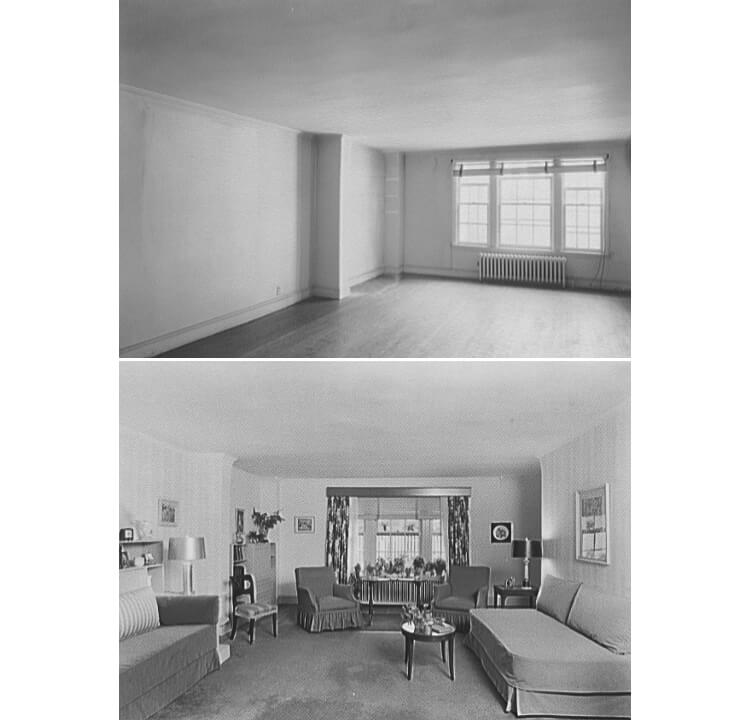
Make a List
Before running out to shop for the two rooms to be decorated, Lambertson and Ruth Pye surveyed the apartment, noted the amount of wall space and made a list of the minimum items that would be needed “to live happily.”
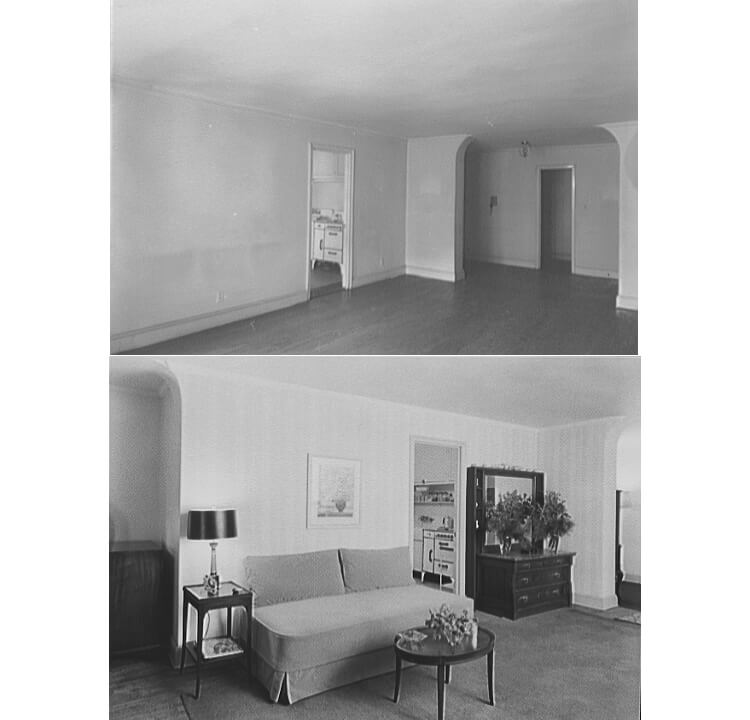
Make Use of What You Have
The couple had seven existing pieces of furniture that were deemed usable in the space, including a Duncan Phyfe drop-leaf table, still a space-saving piece for a small apartment. The couple may not have had a huge inventory of their own furnishings. Leigh, born in Brooklyn, and Ruth, from Lexington, Ky., married in 1914 and through the 1920s spent six months every year in Japan for Leigh’s work as a tea buyer. In 1941, prior to moving to 148 Willow Street, the city directory has the couple living in another rental apartment on Columbia Heights.
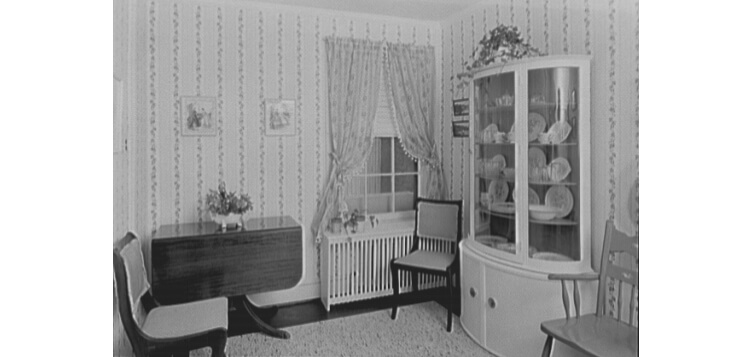
Experiment With Color
Before committing to any purchases, the decorator and client tested out paint and fabric swatches in the empty apartment. While the black and white photos by Gottscho-Schleisner Inc. don’t show off the choices, the couple didn’t shy away from bright hues. The living room alcove was painted a sunny yellow while the rest of the room was adorned with wallpaper in a yellow and gray stripe. Furnishings were mostly upholstered in a range of reds from “rose taupe to wine” with the exception of the armchairs, which were green to go with the painted window valances.
Green continued into the dining alcove off the kitchen, with green and white wallpaper.
Look for Bargains
The budget came in at $433 but, as the article notes, that doesn’t convey the time spent hunting for the right items and making over some bargains. Everything from artwork and lamps to dressers and furniture slipcovers was purchased and the itemized budget might make those currently decorating a bit jealous.
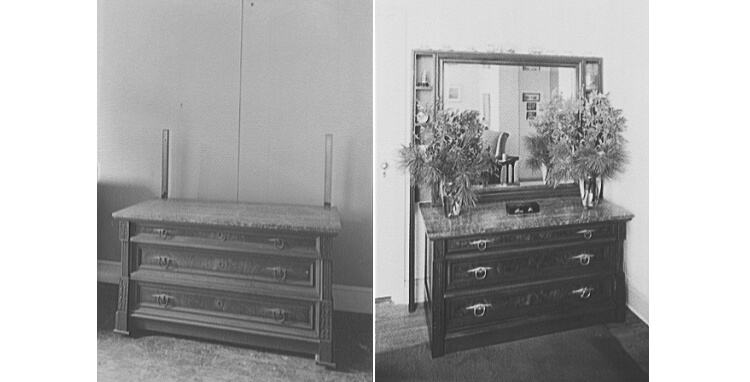
Put in Some Elbow Grease
Decorator Dorothy Lambertson was known for getting “style, glorious color and serviceability” on a budget with her furniture and home makeovers, which appeared in magazines like Woman’s Day, Good Housekeeping and House Beautiful in the 1930s and 1940s. With titles like “It Doesn’t Take Money” and “We Furnish 5 Rooms for $175,” the featured makeovers all included the transformation of furniture found at a bargain. For the Pye apartment, a golden oak china cabinet got its top lopped off and set over a new curved cabinet. The combined piece was painted white. An antique dresser had its mirror removed and hung in a new frame above the base, which was given new hardware and a polish.
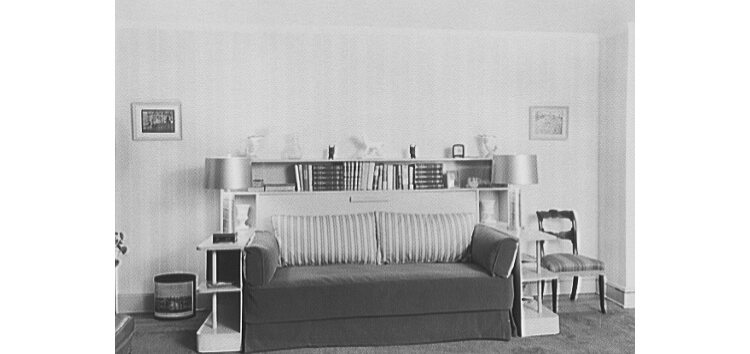
Prioritize Storage and Multipurpose Furniture
A familiar dilemma for studio dwellers faced the renters: whether to hide or disguise a bed. The solution for this couple was two “studio couches,” which served as twin beds. Custom-made storage surrounding one of the beds allowed the linens to be tucked away during the day. Room was made in the budget for another custom piece, a shallow drop-down desk placed in the living room alcove.
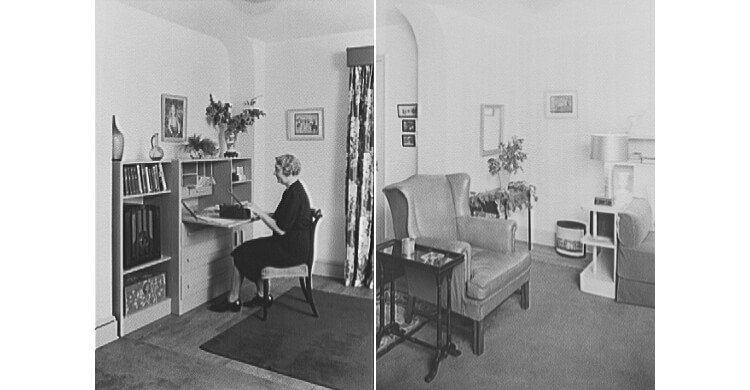
The photos, both those in the original article and the more extensive before and after shots from the Library of Congress, don’t, alas, show the full apartment. There’s a glimpse of the kitchen but no full view of it or the bath. Nor does the article describe the furnishing of the foyer, visible in the “before” photos.
The Pye apartment, which they lived in through 1945 and notes on the photos indicate was No. 1R, was one of 10 at 148 Willow Street at the time. The 1850s row house had been converted to a multiple dwelling, the 1938 I-card and certificate of occupancy show. The exterior was given a Colonial Revival makeover with shutters and a basement entry with a pedimented door surround and sidelights visible in the historic tax photo.
Ads from the early 1940s offered furnished apartments in the building for $90 a month while unfurnished units would cost renters like the Pyes $70 a month. The U.S. Bureau of Labor Statistics inflation calculator puts that unfurnished rent as $1,379.88 in 2021 dollars. That wouldn’t pay for a current rental in the building, where recent prices for units, now exclusively one and two-bedrooms, ranged from $2,600 to $6,200.
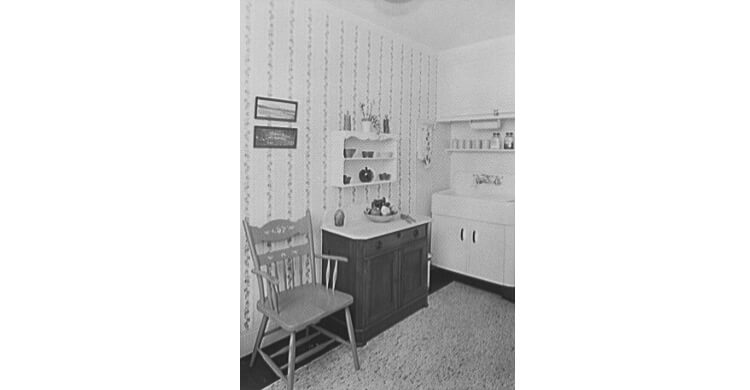
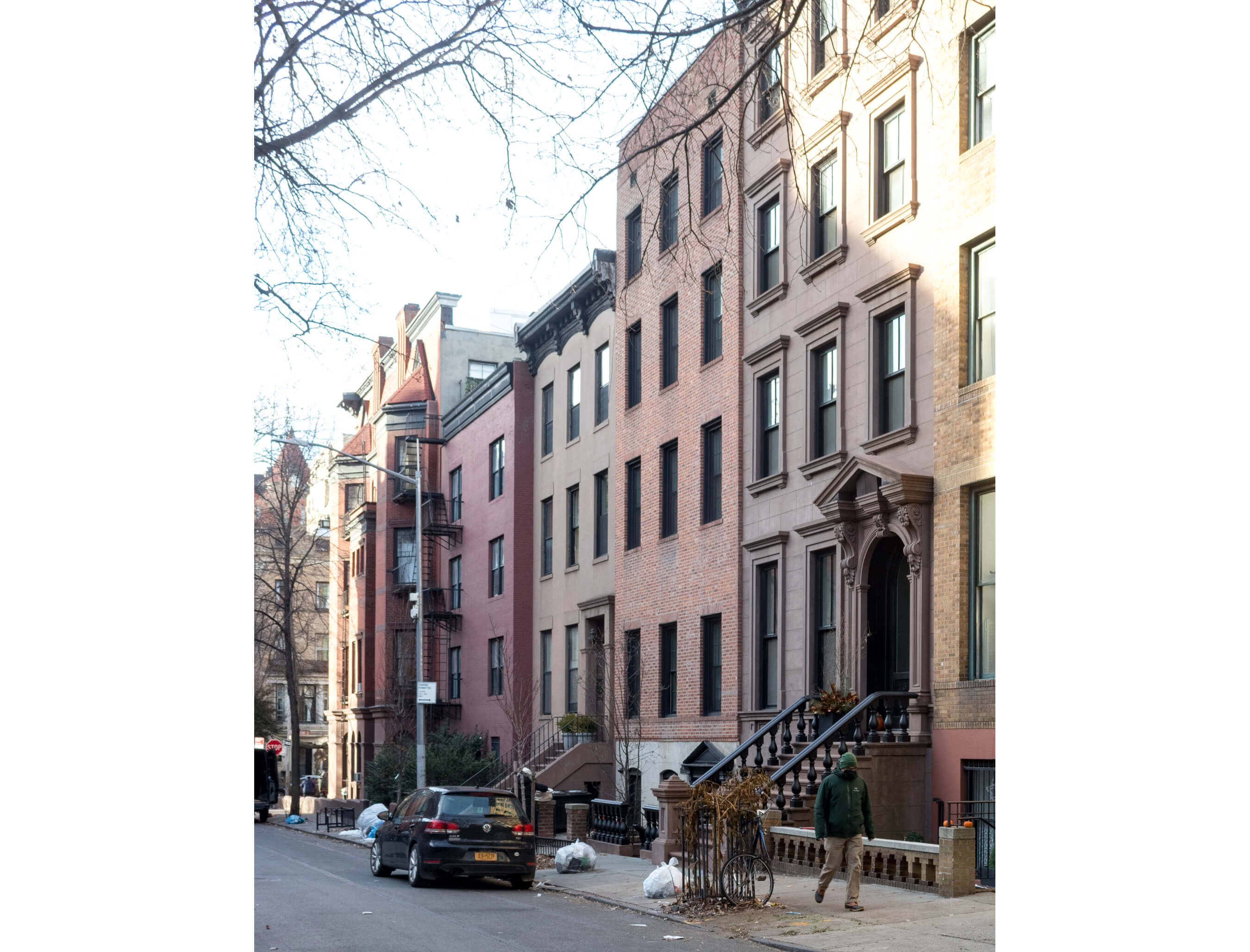
[Photos by Gottscho-Schleisner Inc. via Library of Congress unless noted otherwise]
Related Stories
- Finding Your Way Around 1930s Brooklyn Heights
- The Story of Brooklyn’s Grand Stage, the Brooklyn Heights Promenade
- A Sentinel Overlooking Brooklyn Heights Promenade Has Seen Some Ghosts in Its Time
Sign up for amNY’s COVID-19 newsletter to stay up to date on the latest coronavirus news throughout New York City. Email tips@brownstoner.com with further comments, questions or tips. Follow Brownstoner on Twitter and Instagram, and like us on Facebook.









What's Your Take? Leave a Comment